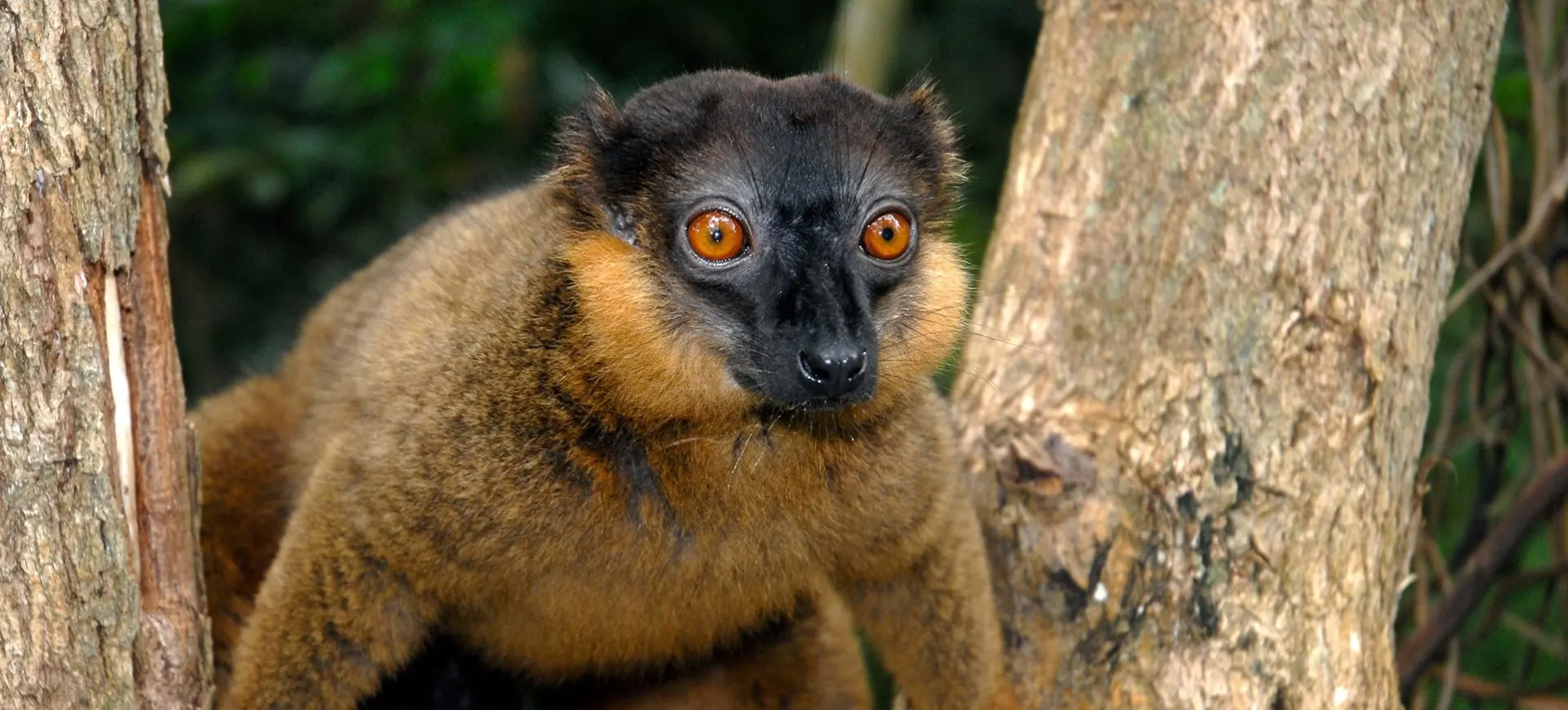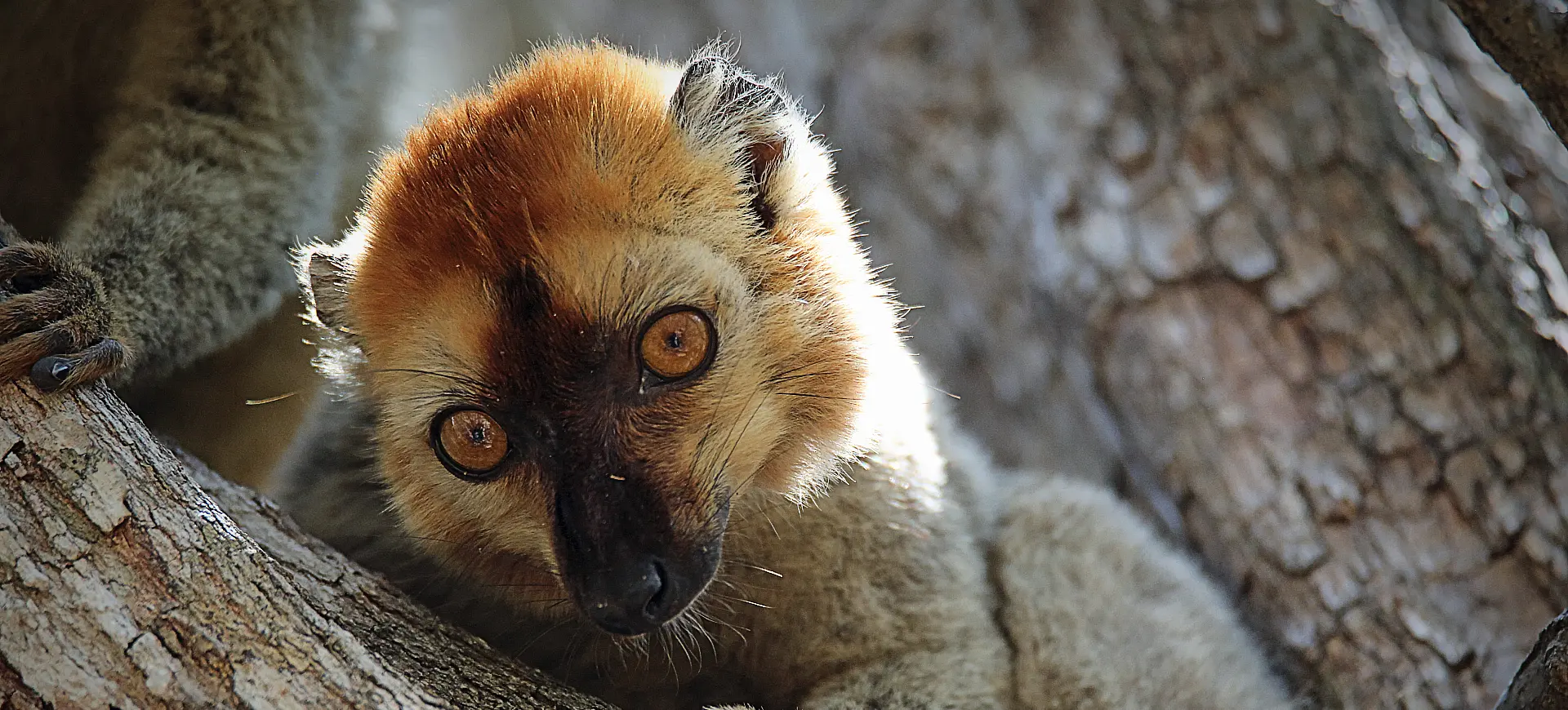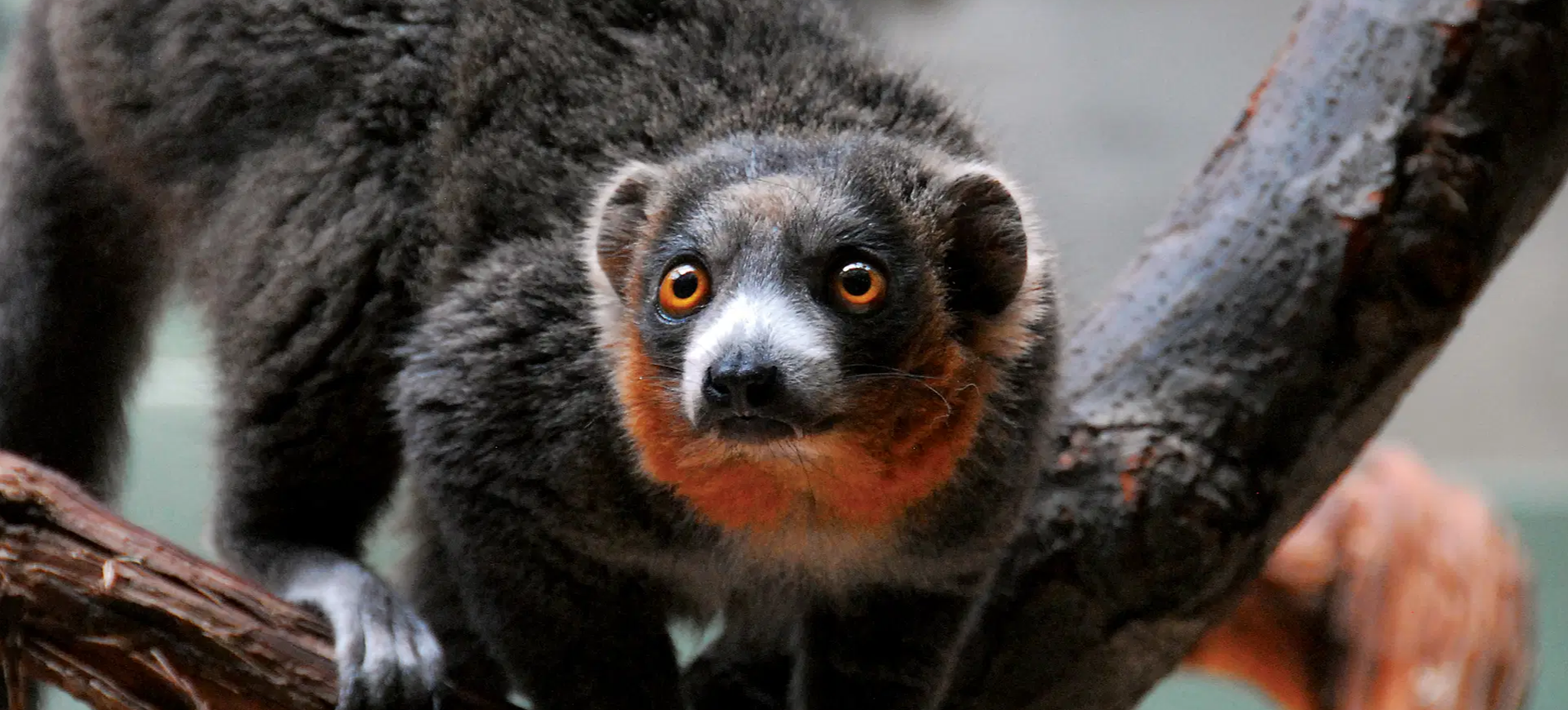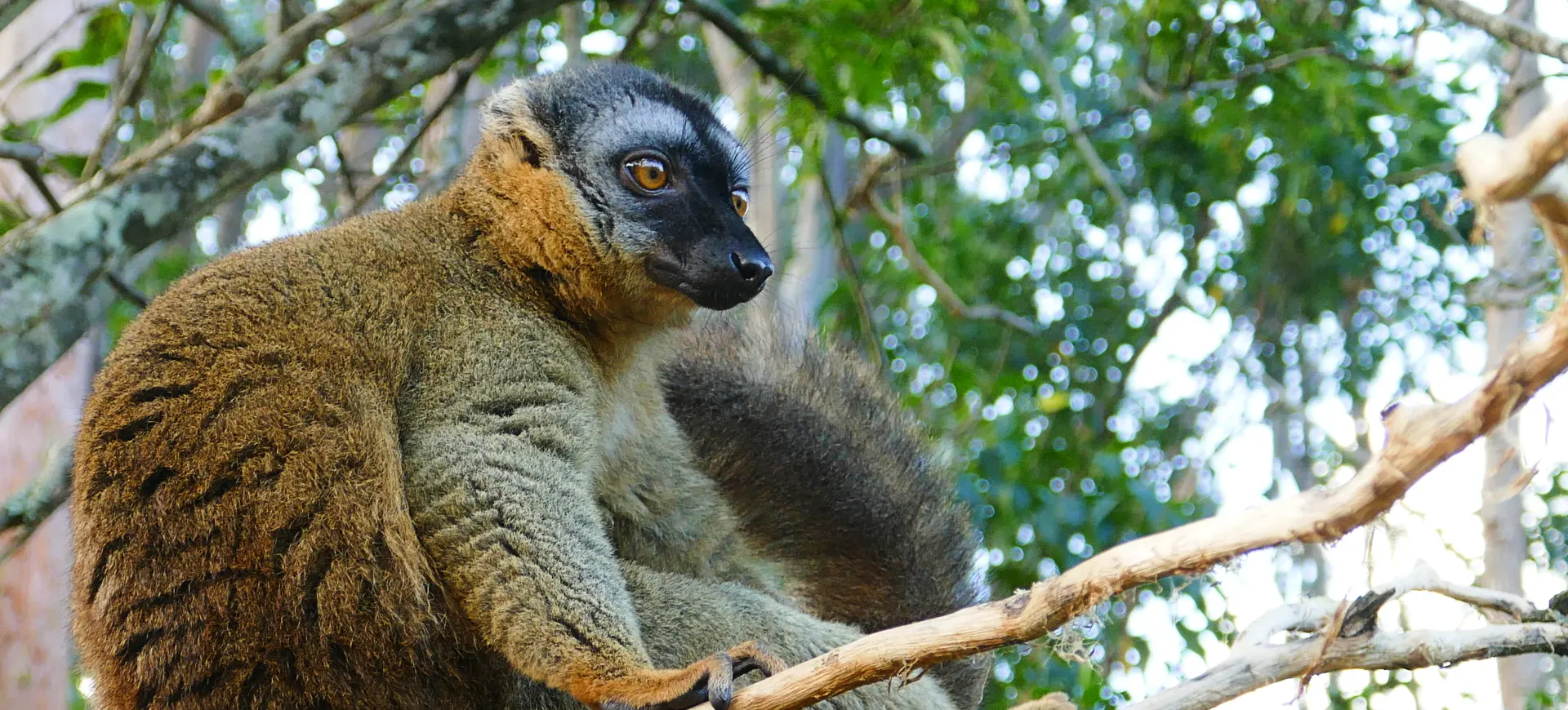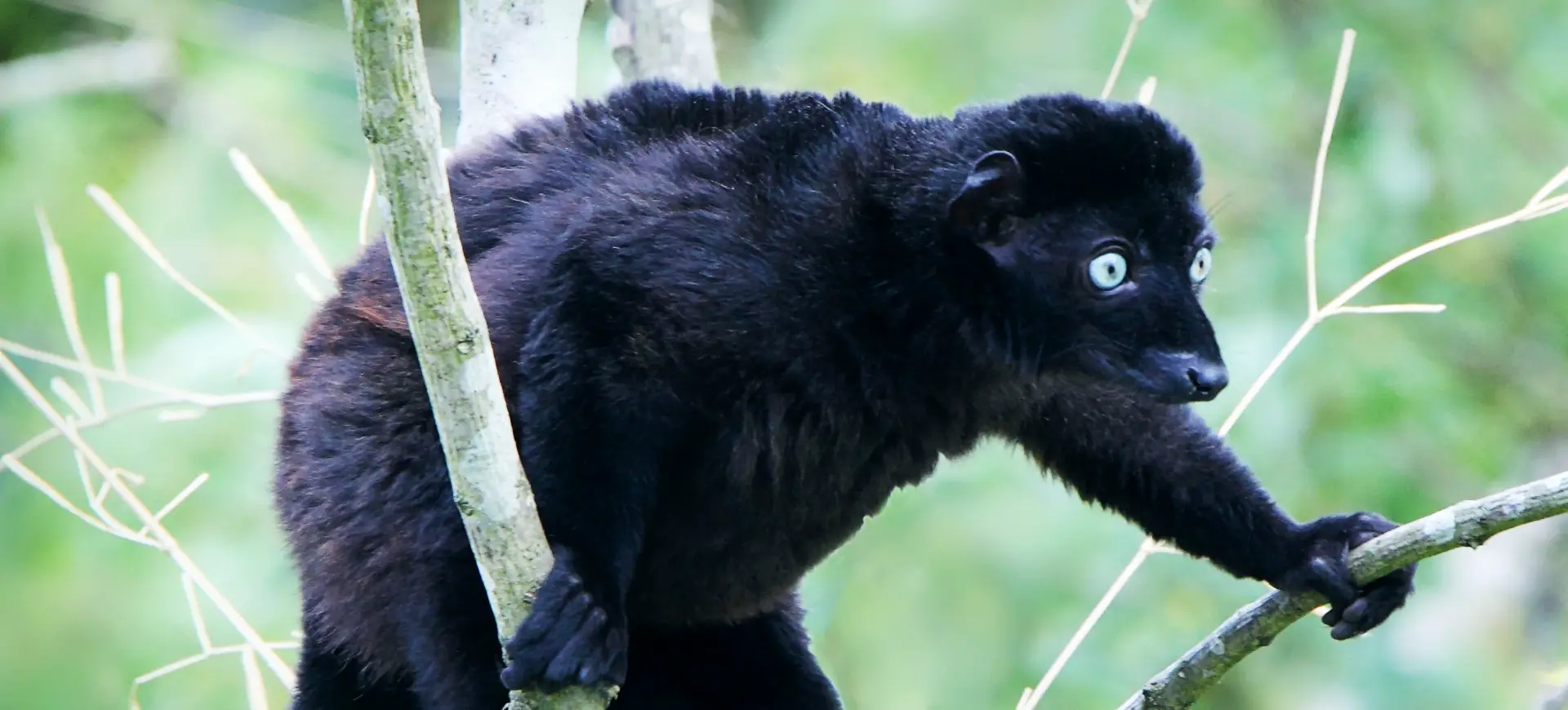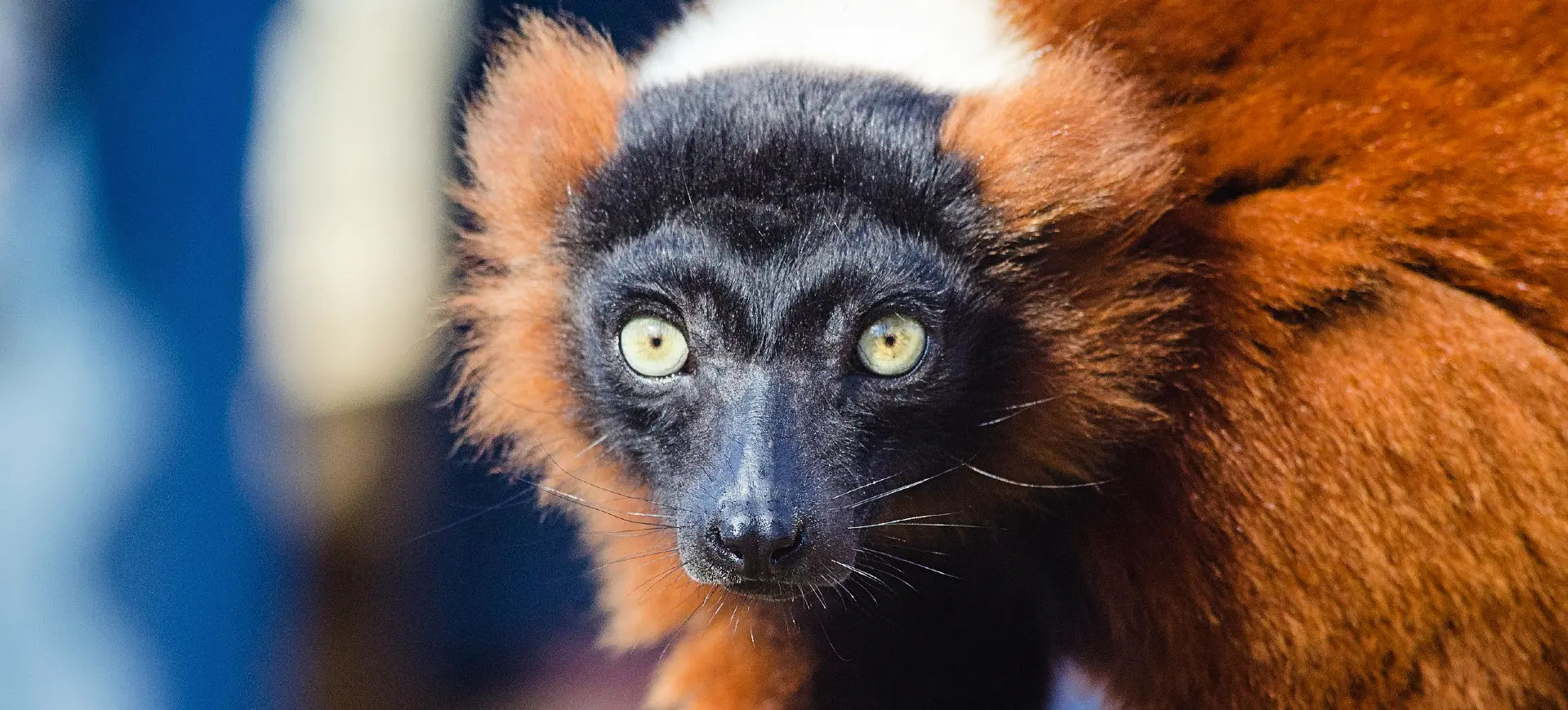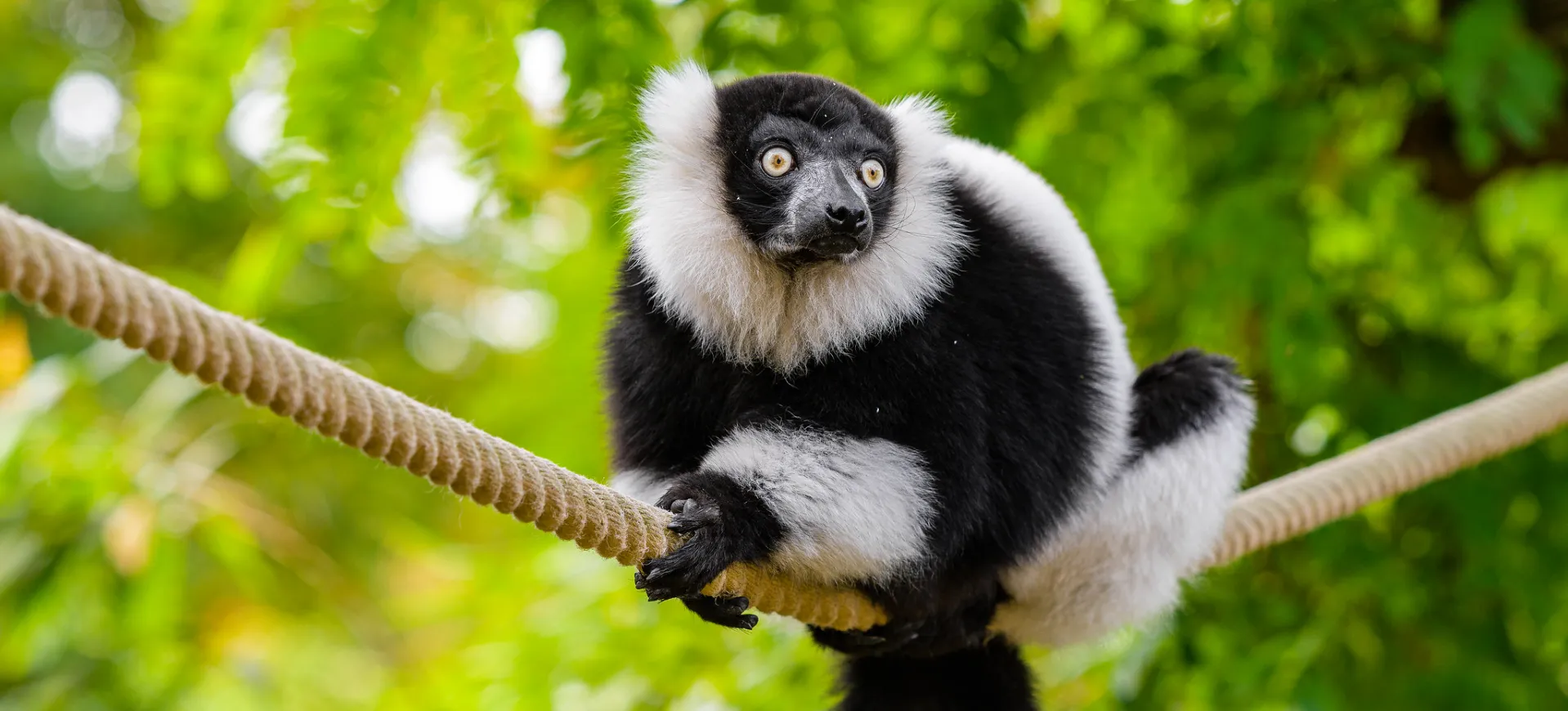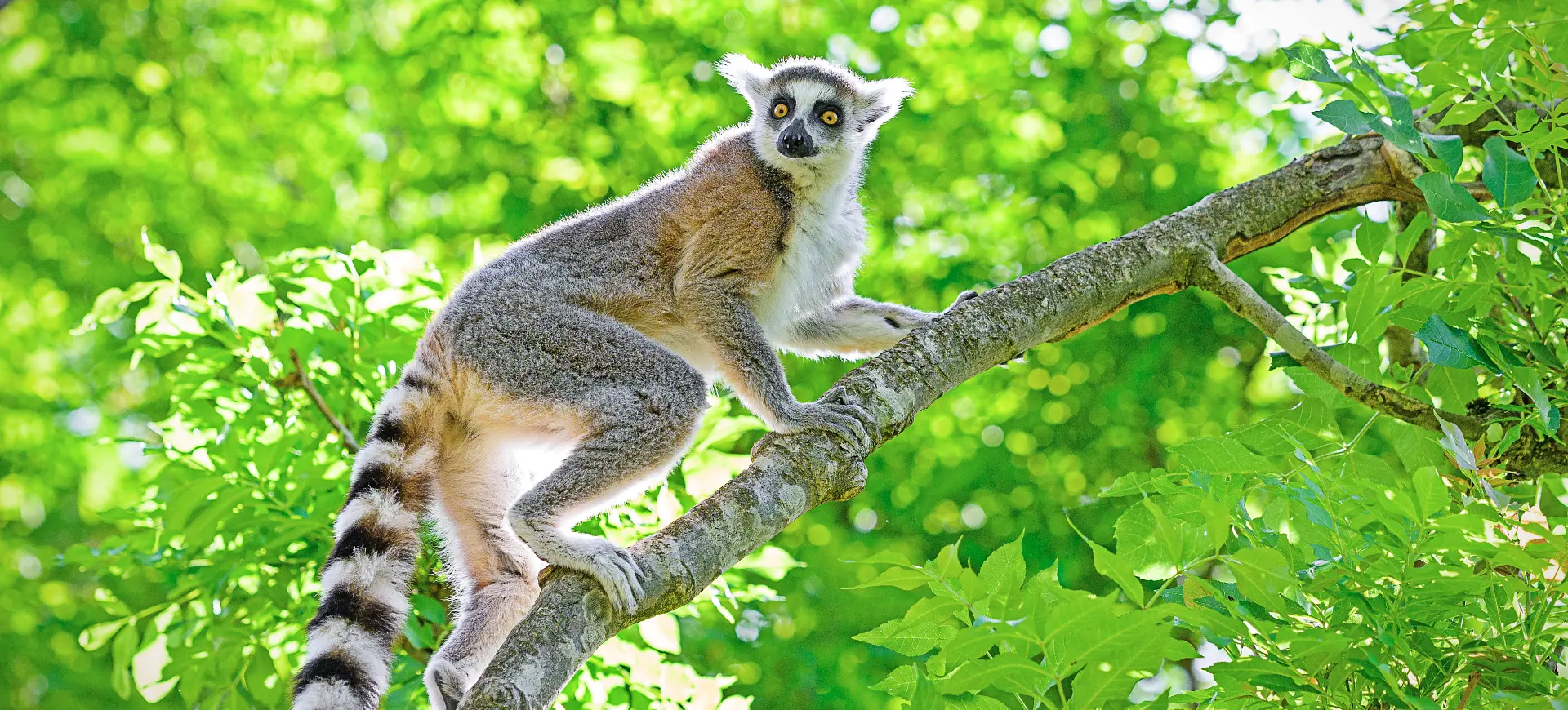Overview
The Crowned Lemur (Eulemur coronatus) is a distinctive lemur species known for its crown-like pattern of fur on its head, from which it derives its name. Endemic to the northern tip of Madagascar, specifically within the dry deciduous forests and rainforest areas, this species plays a crucial role in its ecosystem, particularly in seed dispersal. Crowned Lemurs are small to medium-sized primates, with males and females exhibiting sexual dimorphism in coloration. Males typically have a darker brown coat with an orange crown, while females are primarily grey with an orange crown. This species is known for its agility and adaptability, capable of thriving in diverse forest habitats.
Crowned Lemurs form tight-knit social groups, usually consisting of 5 to 15 members, including male and female individuals. These groups are characterized by strong social bonds and a complex hierarchy facilitating group cohesion and cooperation in foraging and predator avoidance. The species exhibits a variety of vocalizations used for communication within the group, ranging from alarm calls to contact calls. Despite their adaptability, Crowned Lemurs face significant threats from habitat loss and fragmentation due to slash-and-burn agriculture, logging, and the expansion of human settlements.
Conservation efforts for the Crowned Lemur emphasize habitat protection and establishing protected areas to safeguard their remaining populations. These initiatives are vital for preserving their natural habitats, which are critical for their survival and the overall biodiversity of Madagascar. Education and community involvement in conservation practices are essential for promoting sustainable interactions between humans and lemurs. The conservation of the Crowned Lemur is crucial for maintaining the ecological balance and preserving Madagascar’s unique wildlife heritage.
Physical Description:
Crowned Lemurs are notable for their expressive eyes and the distinctive orange or golden crown on their heads, contrasting with their overall fur color. Males typically have a dark grey to black body, a lighter grey belly, and an orange to reddish-brown crown. In contrast, females tend to have a more uniform grey coat with a lighter underbelly and a similar-colored crown. This sexual dimorphism is a key identifying feature and adds to the species’ visual allure in its natural habitat.
These lemurs have a body length ranging from 31 to 36 cm (12 to 14 inches), with an almost equal length tail, which aids in balance but is not prehensile. Their physical build facilitates adept movement through the forest canopy, where they spend most of their time. The hands and feet of Crowned Lemurs are well-adapted for grasping branches, allowing for efficient foraging and locomotion in the trees. Their agile bodies and strong limbs enable them to leap between branches, an essential skill for accessing food and evading predators in the dense forests of Madagascar.

Lifespan: Wild: ~20 years || Capitivity: ~25 years

Weight: Male & Female: 3.5-3.9 lbs (1.6-1.8 kg)

Length: Male & Female: Body 12-14 inches (31-36 cm) || Tail 12-14 inches (31-36 cm)
Characteristic:
Native Habitat:
The Crowned Lemur is endemic to Madagascar’s northern region, with its range primarily confined to the Ankarana and Montagne d’Ambre regions. These areas are characterized by dry deciduous forests and some segments of evergreen rainforests, providing a mix of habitats that support the species’ varied dietary needs. The lemurs’ habitat preferences highlight the need for dense forest canopies that offer ample foraging opportunities and protection from predators.
Habitat loss due to deforestation is a major threat to the Crowned Lemur, with agricultural expansion, illegal logging, and human settlement encroachment reducing their living spaces. Conservation strategies focus on habitat preservation and restoration, aiming to protect the critical forest areas that these lemurs depend on. Establishing protected areas and national parks has been key to conserving their habitats, ensuring that the Crowned Lemur can thrive in its natural environment.
Climate Zones:
Biomes:
Biogeographical Realms:
Continents:
Countries:
Diet:
Diet & Feeding Habits:
Crowned Lemurs are primarily frugivorous, with a fruit diet supplemented by leaves, flowers, and occasionally insects. This varied diet reflects their role as key pollinators and seed dispersers within their forest habitat. Their feeding behavior is adapted to the seasonal availability of food resources, with a preference for ripe fruits, which provide a high-energy yield. During periods when fruits are less available, they shift their diet to include more leaves and flowers, demonstrating flexibility in their feeding habits.
Crowned lemurs’ social nature plays a significant role in their foraging behavior, with group members often feeding together and sharing information about food sources. This cooperative foraging strategy enhances the efficiency of food search and consumption, which is crucial for their survival in the competitive forest environment. Their ability to adapt their diet based on seasonal changes ensures their resilience in fluctuating food availability, highlighting the importance of preserving their diverse forest habitats for continued survival.
Mating Behavior:
Mating Description:
Crowned Lemurs exhibit a polygamous mating system, with males often mating with multiple females during the breeding season. This system facilitates genetic diversity within their populations and leads to competition among males for receptive females. The breeding season typically occurs once a year, with mating peaking at the onset of the rainy season when food resources become more abundant, providing an optimal environment for raising offspring. Females give birth to one, sometimes two, offspring after a gestation period of approximately 125 days, usually timing births to coincide with the peak of fruit availability.
Parental care in Crowned Lemurs is a shared responsibility, with both the male and female participating in rearing their young. This cooperative parenting approach ensures the offspring receive adequate care and protection during their vulnerable early months. The social structure of their groups supports raising the young, with alloparenting observed in some cases, where individuals other than the biological parents contribute to the care of the infants. This social support system is vital for the development and survival of the young, highlighting the importance of group cohesion and cooperation in their reproductive strategy.
Reproduction Season:
Birth Type:
Pregnancy Duration:
Female Name:
Male Name:
Baby Name:
Social Structure Description:
The crowned lemur’s social structure is characterized by small to medium-sized groups that exhibit complex social dynamics and hierarchies. These groups engage in various social behaviors, including grooming, play, and vocal communication, which reinforce social bonds and ensure group cohesion. Territorial behavior is common, with groups actively defending their home ranges against intruders, highlighting the importance of territory for accessing food and shelter.
The Crowned Lemur’s social structure’s adaptability to environmental and demographic changes is a testament to its resilience. However, habitat fragmentation poses significant challenges to its social organization, potentially impacting its ability to maintain social cohesion and successful reproduction. Conservation efforts that focus on preserving and restoring its habitats are crucial for supporting the social structure of Crowned Lemur populations and ensuring their survival in the face of environmental changes.
Groups:
Conservation Status:
Population Trend:
The Crowned Lemur population is currently classified as endangered, facing a decline primarily driven by habitat destruction and fragmentation. The rapid deforestation of their natural habitats for agricultural development, logging, and the expansion of human settlements poses the greatest threat to their survival. These activities reduce the lemurs’ available living space and disrupt their access to food sources and mating partners, impacting their reproductive success.
Conservation efforts to reverse the decline of the Crowned Lemur population focus on habitat protection, restoration, and implementing sustainable land use practices. Engaging local communities in conservation initiatives is crucial for promoting the coexistence of humans and lemurs, reducing the anthropogenic pressures on their habitats. By protecting and restoring the natural forests of northern Madagascar, it is possible to support the recovery of Crowned Lemur populations and ensure their preservation for future generations.
Population Threats:
The primary threats to the Crowned Lemur include habitat destruction due to agricultural expansion, illegal logging, and the encroachment of human settlements. These activities lead to significant loss and fragmentation of their natural habitats, limiting their ability to forage, mate, and migrate. Additionally, hunting for bushmeat and capture for the illegal pet trade further exacerbate the pressures on their populations. Climate change also poses a long-term threat, potentially altering the ecosystems they rely on for survival.
To address these threats, a comprehensive approach to conservation is required, encompassing habitat protection, law enforcement to curb illegal activities, and community-based conservation programs. Sustainable development projects that offer alternatives to destructive land use practices can also contribute to conserving Crowned Lemur habitats. International collaboration and funding are essential for enhancing the scope and impact of conservation efforts, ensuring the Crowned Lemur’s long-term survival.
Conservation Efforts:
The Crowned Lemur’s conservation efforts focus on habitat protection and creating protected areas within their natural range. These initiatives are crucial for safeguarding the remaining populations and preserving the biodiversity of their forest habitats. Reforestation projects aim to restore degraded areas, improving habitat connectivity and quality for the lemurs. Conservation breeding programs, both in Madagascar and internationally, play a role in maintaining genetic diversity and supporting population stability.
Community involvement in conservation efforts is key to ensuring the success of habitat protection initiatives. Educational programs and sustainable livelihood projects help reduce local communities’ reliance on forest resources, promoting conservation-friendly practices. International support, in the form of funding and expertise, is vital for expanding conservation actions and raising awareness about the plight of the Crowned Lemur. It is possible to protect this unique species through concerted efforts and ensure its continued presence in Madagascar’s forests.
Additional Resources:
Fun Facts
- The Crowned Lemur is named for the distinctive crown-like fur pattern on its head, which is especially prominent in males.
- They can make various vocalizations, which are used for communication within the group and to alert others to the presence of predators.
- Crowned Lemurs are known for their agility, able to move quickly through the trees in search of food.
- This species plays an important role in their ecosystem as a seed disperser, aiding in the regeneration of their forest habitat.
- The Crowned Lemur’s diet changes seasonally. During the wet season, it prefers fruits; during the dry season, it prefers leaves and flowers.
- They have a strong sense of smell, which they use to locate food and recognize individual members within their group.
- For the first few months of life, infants are highly dependent on their mothers, staying close for warmth and protection.
- Crowned Lemurs are diurnal, meaning they are active during the day but can also exhibit crepuscular behaviors, especially during mating season.
- Conservation efforts for the Crowned Lemur not only help preserve this unique species but also contribute to the overall biodiversity and ecological health of Madagascar.
- The social bonds within Crowned Lemur troops are strong, and members are often seen grooming each other to maintain relationships and promote group harmony.





